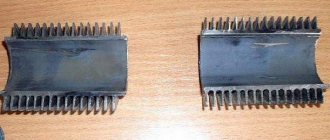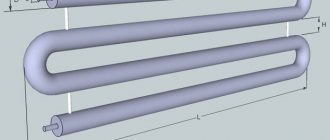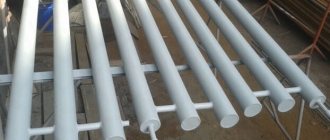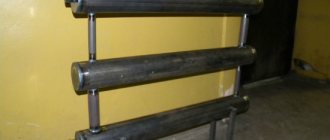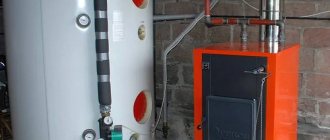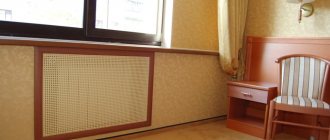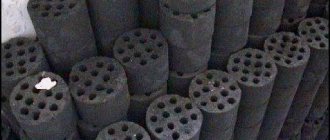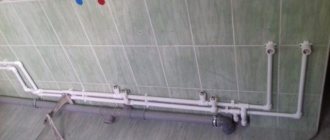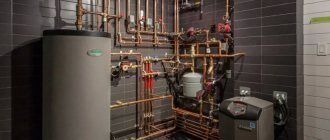Heating of technical premises requires inexpensive and easy-to-use heating devices. For premises such as warehouses, workshops, garages and production halls, heating registers made of smooth pipes are simply irreplaceable. They are very helpful in rooms with increased requirements for cleanliness, as they are easily cleaned of dust and all kinds of contaminants.
When deciding to install heating registers, it is necessary to carefully study their technical characteristics and application features. The simplest configurations of these devices can be made independently; more complex models of ornate shapes require factory manufacturing conditions. One way or another, to ensure optimal temperature conditions, the parameters of the registers must be determined on the basis of thermal engineering calculations.
Adviсe
Before you start making registers, you should take care of purchasing the appropriate materials.
You will need pipes of one diameter or another and some length. Exact numbers are not given here, since the device of the type in question can be assembled from any pipes without focusing on their diameter and thickness. More important is to ensure optimal heat transfer, which implies calculations regarding the required surface area of the register
To do this, you will need to determine the outer area of the entire system. The resulting value is then multiplied by 330 W. The use of this method is based on the statement that 1 m2 gives off 330 W of heat if the temperature of the medium is 60 °C and the air inside the heated room is 18 °C.
For people skilled in welding, assembling the structure will not be difficult. It will be necessary to prepare pipes and cut them into sections, and also take care of the plugs, for the manufacture of which a steel sheet will be required. Register assembly does not imply the presence of a strictly defined order of actions. Upon completion of welding work, it is necessary to ensure the tightness of the created structure. Otherwise, the following advice can be given:
- you should select pipes with an optimal wall thickness, since too thin ones cool quickly enough, and thick ones take a long time to warm up;
- the upper section must be supplemented with a Mayevsky valve, with the help of which air is released;
- assembly of the register in the form of a coil involves the use of a pipe bender; if this is not possible, the rotary sections can be assembled from ready-made elbows;
- the coolant inlet must be equipped with a tap, and the outlet with a valve;
- The installation of the register should be carried out with a slight slope in the direction where the supply pipe is located, which ensures that the Mayevsky crane occupies the highest position.
Flat-plate heat exchanger
A popular option, which is used both for stoves in the bathhouse and for the home. They are the simplest to manufacture, the surface is easy to clean from soot accumulations, installation is possible both vertically and horizontally, and the efficiency is relatively high.
A flat boiler can have a high volume, so you can take hot water for washing directly from the heating system. An expansion tank with an increased linear size is installed, into which water constantly flows after the level drops below critical. This option is quite convenient and helps solve several problems at once, but there is also a condition - the room temperature in winter should not drop to minus.
Key disadvantage: a sharp decrease in heat transfer from the furnace walls. This type of heat exchanger is made in the shape of the letter “P” and is installed around the perimeter of the firebox, bypassing the door. As a result, it turns out that the temperature of the external walls is quite low, as a result, warming up the room takes much longer. This is critical only if the stove is installed in a bathhouse; for residential buildings, where the stove is constantly heated, increasing the warm-up time by several hours does not play any role.
Thus, when choosing a flat boiler, think about how you can increase the heating rate. One option is to enlarge the heater and place it directly above the firebox. Second option: using a metal chimney for heating, increasing its length.
Design features
Essentially, a register is one or more pipes connected to each other in parallel
Here it is important to create conditions so that the coolant flows sequentially from one pipe to another, releasing heat into the room. Therefore, two types of registers are made
Sectional
Several parallel pipes, the ends of which are closed with plugs. Jumpers are installed between them, through which the coolant flows from one section to another. It moves from top to bottom, that is, it enters the upper pipe and comes out of the lower one.
Important! The jumpers are installed in a checkerboard pattern. If between the first and second sections the jumper is installed on the left, then between the second and third - on the right
The diameter of the jumpers is much smaller than the diameter of the sections. For example, if the diameter of the main register element is 80 mm, then the jumpers are 32-40 mm.
Serpentine, their drawing
This is the same design, only the sections are connected to each other by double 90° bends of the same diameter as the main pipes, and a continuous pipe structure of one large diameter along the entire length is obtained. The heat transfer of this type of register is much higher than that of the previous version.
Photo 1. Drawing of a coil-type register, which is a continuous pipe structure of the same diameter along the entire length.
The advantages of the design include the low hydraulic pressure of the coolant inside the device, which allows a sufficiently large volume of hot water to pass through it.
Reference! The coil can be installed either horizontally or vertically.
Welding technology
Purely technologically, the connection of steel elements is made either by electric or gas welding, where the technology is almost the same
When welding registers, please note that in coil structures the joints are vertical seams, and in sectional ones they are both vertical and horizontal. It is easier to cook the latter because they are located in the plane of the table
The following requirements apply to the technology of welding horizontal seams (section + jumper):
- Tack can be carried out at one or two points, aligning the jumper vertically. Two points are located symmetrically relative to the axis of installation of the jumper.
- A joint connected by one tack point is cooked immediately, but the process must begin on the opposite side of the tack.
- A joint connected by two tack points is welded from the first point.
- Vertical joints in registers - connection of main pipes with plugs and 90° bends. The following requirements apply to seams of this type:
- If the pipe thickness is up to 3 mm, then the joint is scalded in one pass with a 2.5 mm electrode.
- If the thickness exceeds 4 mm, then welding is carried out in two passes: with a root seam, and on top with a facing roller.
- When connecting pipes with a diameter of more than 60 mm, welding is carried out in sections along the entire perimeter of the joint.
There are general rules of welding, which indicate purely technological techniques. For example, the end of a seam must be welded to the beginning, forming a “lock”. If welding is performed in two seams, then the second is carried out in the opposite direction of the first.
There are several welding parameters that you need to pay attention to when carrying out welding work. This is the diameter of the electrode, which is selected depending on the thickness of the steel workpieces being welded, this is the current strength supplied to the electrode from the welding machine, the polarity and voltage of the welding arc
Ratio of metal thickness to electrode diameter
| Metal thickness, mm | 1—2 | 3—5 | 4—10 | 12—24 | 30—60 |
| Electrode diameter, mm | 2—3 | 3—4 | 4—5 | 5—6 | 6 or more |
The current strength is selected depending on the diameter of the selected electrode. The dependence is as follows: I=Kd, where K is the coefficient of correlation with the diameter of the electrode.
| Electrode diameter, mm | >2 | 3 | 4 | 5 | 6 |
| Coefficient - "K" | 25—30 | 30—35 | 35—40 | 40—45 | 50—60 |
Types of heating registers
Heat-transfer devices of this type come in several types, depending on their design features, pipe shape and material of manufacture.
Thermal registers of various designs
The design of the heating register can be coil or sectional.
They consist of several parallel pipes connected by arc-shaped pipes, or one pipe bent like a snake. Depending on the characteristics of the room and the required temperature, the device is made with one or more bends.
With this design, all elements of the register participate in the heat exchange process, providing high heating efficiency while saving space. Coils are complex to manufacture, requiring either a welder to assemble the register from individual parts, or a pipe bender to bend a long pipe, which requires certain skills in working with these tools.
Section registers
Registers made in the form of sections are much easier to manufacture, since they represent several identical sections of pipe connected at the edges by connecting pipes. Sections are connected in series or in parallel:
In the first case, connecting pipes are installed either from the left or from the right edge of the sections. The capacity of the connecting pipes is the same as that of the transport pipes. On the opposite edge, instead of a connection, a support is mounted to hold the pipes in the desired position, and the ends of the pipes are closed with plugs. The energy carrier moves along the heat-transfer circuit in the same way as in a coil register - passing through the sections one by one.
Classification by section shape
The snake or sections of heating devices can be made of pipes of various shapes:
| Pipe shape | pros | Minuses |
| Round section | low cost of consumables, availability of fittings and fittings for sale, high throughput, low hydraulic resistance, ease of external cleaning; | complexity of calculating the geometry of holes for connection, large volume of the finished register; |
| Rectangular or square section | simplicity of calculations and installation, ease of external cleaning, compactness; | high price, lower capacity than round pipes, high hydraulic resistance |
| Pipes with fins - heat transfer plates perpendicular to sections | increased heat transfer, compactness; | unpresentable appearance, difficulty of external cleaning, complexity of installation, high price. |
Types of registers by material of manufacture
The material used for the manufacture of pipes also affects the cost, size, efficiency and aesthetics of the register:
| Material | pros | Minuses |
| Carbon steel | low cost, easy installation, | low heat transfer, susceptibility to corrosion, need for coloring |
| Galvanized steel | low cost, corrosion protection | low heat transfer, difficulty of installation due to the impossibility of using electric welding, unaesthetic appearance |
| Stainless steel | resistance to corrosion, ease of installation, coloring is not necessary, but possible | low heat transfer, high cost |
| Copper | high heat transfer, compactness, light weight, plasticity, allowing you to make a register of any shape, corrosion resistance, aesthetics | high price, inapplicability in heating circuits made from alloys incompatible with copper (cast iron, steel, aluminum) due to possible oxidation, Suitable only for clean and chemically neutral coolants, instability to mechanical damage |
| Aluminum | high heat transfer, low weight, | high cost, impossibility of self-production, since welding requires specialized equipment, |
| Cast iron | high heat transfer, durability, resistance to mechanical damage, average price range, chemical inertness | heavy weight, big sizes, complexity of installation, heats up slowly and takes a long time to cool down |
Registers from pipes of various shapes and materials can be made independently or purchased ready-made, then all that remains is to install and connect the device to the thermal circuit.
Bimetallic batteries
These radiators are made of a steel core inside and aluminum fins outside. The high strength of the batteries is achieved by the presence of steel inside. Most models are tested under pressure of 60 and even 150 atmospheres. They also have good chemical stability.
The high heat transfer of bimetallic radiators is due to aluminum fins with a significant surface area. Due to the small cross-section of the channels inside the sections, a high speed of coolant movement is ensured and there is no need for frequent flushing. The main disadvantage of bimetallic radiators is their high cost. Thus, a ten-section bimetallic battery will cost several times more than other options.
Reduced heat transfer.
In order to save energy, it becomes important to reduce the heat transfer of pipes in those sections of communications that are not used for their intended purpose, for example, when moving from one building to another or in an unheated room.
There are many options for using thermal insulation materials for this. Manufacturers offer a fairly wide range to choose from, ranging from cheap fiberglass to more expensive types of polystyrene foam. You can purchase pipes with insulating elements already built into them.
To summarize, we conclude that the use of such calculations helps to significantly save money and avoid many technical obstacles when designing water and heat supply systems.
Actually, you are a desperate person if you decide to undertake such an event. The heat transfer of a pipe, of course, can be calculated and there are a great many works on the theoretical calculation of the heat transfer of various pipes.
Let's start with the fact that if you decided to heat your house with your own hands, then you are a stubborn and purposeful person. Accordingly, a heating project has already been drawn up, pipes have been selected: either metal-plastic heating pipes or steel heating pipes. Heating radiators have also already been looked at in the store.
But, before acquiring all this, that is, at the design stage, it is necessary to make a conditional relative calculation. After all, the heat transfer of heating pipes, calculated in the project, is the key to warm winters for your family. There is no room for error here.
Methods for calculating heat transfer from heating pipes
Why is the emphasis usually placed on calculating the heat transfer of heating pipes? The fact is that for commercially manufactured heating radiators, all these calculations have been made and are given in the instructions for use of the products. Based on them, you can easily calculate the required number of radiators depending on the parameters of your home: volume, coolant temperature, etc.
Tables.
This is the quintessence of all the necessary parameters collected in one place. Today the Internet contains a great many tables and reference books for online calculations of heat transfer from pipes. In them you will learn what is the heat transfer of a steel pipe or cast iron pipe, the heat transfer of a polymer or copper pipe.
All that is needed when using these tables is to know the initial parameters of your pipe: material, wall thickness, internal diameter, etc. And, accordingly, enter into the search the query “Table of heat transfer coefficients of pipes.”
This section on determining the heat transfer of pipes also includes the use of manual reference books on heat transfer of materials. Although they are becoming more and more difficult to find, all information has migrated to the Internet.
Formulas.
The heat transfer of a steel pipe is calculated according to the formula
Qtr=1.163*Str*k*(Twater - Air)*(1-efficiency of pipe insulation), W where Str is the surface area of the pipe, and k is the heat transfer coefficient from water to air.
The heat transfer of a metal-plastic pipe is calculated using a different formula.
Where is the temperature on the inner surface of the pipeline, °C; t
c is the temperature on the outer surface of the pipeline, °C;
Q—
heat flow, W;
l
—pipe length, m;
t
—coolant temperature, °C;
t
inc—air temperature, °C;
a n is the external heat transfer coefficient, W/m 2 K; d
n - outer diameter of the pipe, mm;
l—thermal conductivity coefficient, W/m K; d
in
-
internal diameter of the pipe, mm; a int - internal heat transfer coefficient, W/m 2 K;
You understand perfectly well that calculating the thermal conductivity of heating pipes is a relative value. The formulas include the average parameters of certain indicators, which may, and do, differ from those that actually exist.
For example, as a result of the experiments, it was found that the heat transfer of a polypropylene pipe located horizontally is slightly lower than that of steel pipes of the same internal diameter, by 7-8%. It is internal, since polymer pipes have a slightly thicker wall thickness.
Many factors influence the final figures obtained in tables and formulas, which is why the footnote “approximate heat transfer” is always included. After all, the formulas do not take into account, for example, heat loss through the building envelope made of different materials. There are corresponding tables of amendments for this purpose.
However, by using one of the methods for determining the heat output of heating pipes, you will have a general idea of what kind of heating pipes and radiators you need for your home.
Good luck to you, builders of your warm present and future.
Algorithm for performing installation work
The installation of a two-pipe associated heating system is carried out in accordance with a certain algorithm, where the initial stage is the selection of pipe diameters, and the final stage is the installation of a circulator pump.
Calculation of pipeline diameter
There is a scientifically based method of calculation. The cross-section of the pipe is selected based on the volume of coolant passing through the pipe per unit time. The calculation starts from the distant radiator using the formula:
G=3600×Q/(c×Δt), (1)
where: G – water consumption for heating the house (kg/h);
Q is the thermal power required for heating (kW);
c – heat capacity of water (4.187 kJ/kg×°C);
Δt is the temperature difference between the hot and cold coolant, taken equal to 20 °C.
Next, calculate the cross-section of the pipes using the formula:
S=GV/(3600×v), (2)
where: S is the cross-sectional area of the pipe (m2);
GV – volumetric water flow (m3/h);
v is the speed of water movement, is in the range of 0.3−0.7 m/s.
The resulting figure is the cross-section; based on it, the internal diameter of the pipeline is selected.
This calculation is carried out for all radiators up to the boiler.
When calculating, you can also rely on the table of the dependence of the internal diameter of the pipe on the thermal load.
Table of dependence of the internal diameter of the pipe on the thermal load
The following guidelines can be taken into account:
- For heat losses of up to 15 kW (150 sq. m.) of area, pipes with a diameter of 20 mm are suitable.
- For losses from 15 to 27 kW (up to 250 square meters), pipes with a diameter of at least 25 mm will be required.
Carrying out calculations using the given formulas or hydraulic tables is a difficult task for the homeowner, so you can rely on the recommended pipe diameters.
The diameter of the pipeline must be the same throughout its entire length to ensure stable operation of the batteries. The recommended minimum internal diameter of pipes is 20 mm.
The following conditions must be met:
- Place pipes under the floor covering to avoid high-rise contours. If this is not possible, then you need to take into account the configuration of the house and strive as much as possible for the same height of pipe laying.
- Pipe material is metal-plastic or polypropylene reinforced with aluminum foil. Such pipes are stronger and will last a long time.
- Radiators are installed bimetallic or steel with a bottom connection system. Such batteries have higher hydraulic resistance, which balances the system. The power of the radiators should be the same throughout the entire area of the house.
- Each battery is equipped with a balancing valve on the return line. It is advisable to install thermostats.
Boiler installation
The room where the boiler is installed must have a height of at least 2.5 m. The volume of the room is recommended from 8 cubic meters. The hot water boiler must be selected depending on the area of the heated house. Boiler power for heating is 10 kW. m is equal to 1 kW. Based on this, the power for the entire system is selected.
The boiler piping consists of a set of shut-off valves; it is installed in several places:
- On the make-up pipe.
- On both sides of the pump.
- At the expansion tank.
- On the pipes coming from the boiler.
Mainline pulling
When installing the associated heating system distribution line, the following must be taken into account:
- The outlet branch of the main line must be located below the supply branch.
- The heat supply and heat removal pipes must be parallel to each other.
- The expansion tank must be installed above the heating boiler.
- Valves for draining water must be installed on the connecting radiators. It is recommended to install a thermostatic head on each radiator to ensure a comfortable temperature.
- When laying the pipeline, right angles are excluded to avoid the occurrence of air locks in the system.
- The expansion tank must be installed in a heated room.
- All diameters of pipes, fittings and taps must match each other. You cannot install pipes of different diameters in an attempt to save money. The water pressure in the system will be disrupted.
Installing a circulation pump
It is unreasonable to rely on natural circulation, since there are 10 or more batteries in the associated heating system. Gravity will not be able to work without forced pressure. The circulation pump is installed on the return branch near the boiler. The pump is installed using a bypass and three valves. It is recommended to install a filter.
A circulation pump is installed on each floor
The associated heating system is installed in one-story and two-story buildings. In two-story buildings, during installation you need to take into account some nuances:
- A circulation pump is installed on each floor. If a breakdown occurs on one floor, the heating will work fully on the other.
- For each floor it is recommended to install according to a separate scheme.
Types of heating registers
Heating registers are a group of pipelines located parallel to each other and communicating with each other. They may differ in material, shape and design.
Materials for production
Most often, heating registers are made of smooth steel pipes in accordance with GOST 3262-75 or GOST 10704-91. The use of electric welded pipes is preferable due to their ability to withstand higher pressures. However, in practice, water and gas pipes are also quite common, and they are operated no less successfully. Such heating devices can easily withstand all kinds of mechanical damage and loads, as well as work with any coolant.
There are also stainless steel models. They are installed in rooms with increased requirements for aesthetics and durability. Due to the increased cost, the use of stainless steel registers is most justified in bathrooms. The high corrosion resistance and variety of configurations of stainless steel heated towel rails allow them to be used even in the most modern bathroom interiors.
Aluminum and bimetallic registers are more efficient in terms of heat transfer. They are lightweight and aesthetically pleasing, and work perfectly in individual heating systems with well-organized water treatment. In other cases, low quality coolant leads to rapid failure of devices.
Sometimes you can find registers made of copper. They are usually used in systems where the main wiring is copper. They are easy to work with, very attractive and durable. In addition, the thermal conductivity of copper is approximately 8 times higher than steel, which makes it possible to significantly reduce the size of the heating surface. A common disadvantage of all devices made of non-ferrous metals - sensitivity to operating conditions - limits the scope of application of copper registers.
Design
The most characteristic designs of traditional steel registers can be divided into 2 types:
The first is characterized by a horizontal arrangement of pipelines and the use of vertical narrow jumpers between them. The second involves the use of straight and arcuate elements of the same diameter, which are connected by a snake using welding. When using stainless steel or non-ferrous metals, the pipes are simply bent to give the required configuration.
There are three options for connecting pipes:
They can be located either on one side of the device or on different ones. The coolant outlet is provided under the supply or diagonally from it. Sometimes there is a lower connection of lines, but in this case the heat transfer is significantly reduced.
In sectional registers, there are 2 types of connections depending on the method of arranging jumpers:
Plain tube registers can be used as registers for the main heating system or as separate heaters. For autonomous operation, a heating element of the required power is installed inside the device and connected to the network. Antifreeze or oil is often used as a coolant for portable electrical registers made of steel, because... it does not freeze during storage or during a power outage.
When used separately from the general heating system, it is necessary to additionally place the expansion tank in the upper part of the device. This avoids pressure increases due to volume expansion during heating. The size of the container is selected based on the ability to accommodate about 10% of the total amount of liquid in the heater.
For autonomous use of the register made of steel pipes, legs with a height of 200 - 250 mm are welded to it. If the device is part of a heating circuit, its movement is not planned and the walls are strong enough, then a stationary mount is used using brackets. Sometimes for very massive registers a combined installation option is used, i.e. The device is placed on stands and additionally fixed on the wall.
Specifications
Technical requirements for heating devices, including tubular radiators, are standardized by GOST 31311-2005. According to this standard, pipes in accordance with GOST 3262, GOST 8734, GOST 10705, GOST 10706 with a wall thickness of at least 1.25 mm must be used for their manufacture. At the same time, heated towel rails are allowed to be made from carbon steel with a wall of at least 3 mm, stainless steel, as well as brass (copper-zinc alloys) in accordance with GOST 15527.
It is also possible to use other materials if the heating devices comply with all provisions of the standard and have the necessary strength characteristics. The design of devices is not standardized and remains at the discretion of the manufacturer, subject to compliance with basic requirements. This gives complete freedom for creativity and allows you to create unique design configurations of tubular radiators, which significantly expands the scope of their application.
*
The characteristics of heating registers made of smooth pipes depend on the selected material, size and configuration. They are determined using special formulas, tables or manufacturer’s materials.
Let's consider the main parameters of conventional steel registers. They are characterized by the use of large diameter pipes, mainly in the range of 32 – 219 mm. They can withstand operating pressure up to 100 Pa (10 kgf/m²). The coolant can be a variety of liquids - water, antifreeze, oil - or high-temperature steam.
Having a detailed drawing, a register from smooth steel pipes can be made by any craftsman with welding skills. To do this, just find the source material, a welding machine and an angle grinder. You can also order the register at the factory according to individual drawings.
Important! It is necessary to maintain not only the length, diameter and number of pipes, but also the distance between them. Too close a location significantly reduces the heat transfer of the device due to the mutual influence of the elements. If the distance is made too large, then the height of the device can be enormous and not convenient to install and use. The optimal spacing of the rows of the heating register is considered to be 1.5 radii, but not less than 50 mm.
To obtain the best results, all parameters must be determined on the basis of thermal calculations, based on the required heat transfer and the characteristics of the room. Without proper calculation, even a well-made register may not be able to cope with heating the available area.
Self-installation
Split bolt mounting
Two installation methods:
- removable bolt connection,
- non-detachable welding connection.
The choice should be based on the weight and size of the device, and also take into account the characteristics of the heating system. You can take the rules for installing heating radiators as a basis; there is no fundamental difference.
Slope indicator - it is important to take into account, when connecting to a gravity system, the slope along the flow of the coolant. In systems where pumping equipment is not used and where the driving force is the difference in its partial pressure there are no such problems
In systems where pumping equipment is not used and where the driving force is the difference in its partial pressure, there are no such problems.
Installation rules:
- The recommended distance, in accordance with the technological process, from the wall and windows is at least 20 cm.
- Detachable installation requires the use of only paranitic pads or flax used in plumbing work,
- All steel heating registers must be painted to avoid rusting.
- It is better not to carry out installation during the heating season.
A comparative analysis of the calculated and actual power of the register can be carried out at the end of the test launch of the system, and if necessary, design changes can be made.
Installation methods: welding or threading?
The biggest problem when carrying out installation work on assembling and installing heating registers is welding work. Heating appliances are assembled from individual parts outside the room, and then the heating system is installed from the prepared blanks using gas welding. Welded seams can be replaced with threaded connections, which are inferior in strength and durability, but if the work technology is followed and modern materials are used, they can ensure long-term operation of heating equipment.
A heating register in a garage or warehouse is an independent device that allows you to heat a technical room using electricity
Types of heating registers
There are 3 types of registers considered:
- Sectional in the form of the letter “P”.
- Serpentine, the shape of which is S-shaped.
- Mixed.
Pipes made of steel or stainless steel are used for production, the diameter of which ranges from 25 to 200 mm. Industrial premises with administrative or economic purposes are heated through the use of pipes with a diameter of 25 to 100 mm. As for registers with a larger diameter, reaching 200 mm, they are installed in production workshops and at sports facilities of varying scale, for example, swimming pools.
As applied to private households, their installation significantly reduces heating efficiency.
When assembling registers, almost any number of sections can be used, which is determined only by the area of the room and the required amount of heat transfer.
When connecting sectional registers, jumpers are used that have a smaller diameter compared to the pipes that are part of the type of device under consideration. To calculate the optimal distance between heating pipes, use the formula D+50 mm, where D should be understood as the pipe diameter. Compliance with the distance calculated in this way makes it possible to minimize the infrared radiation of the pipes in relation to each other, which ensures an increase in heat transfer.
The connection of coils is possible due to bends, the diameter of which is identical to the diameter of the pipes. They are installed at the ends of the connected device. Because of this connection method, the cost of connecting registers increases, but not significantly. In this case, the increase in costs is compensated by an increase in operating efficiency, which provides a larger working surface area. Also, the coil register has such a positive aspect as lower hydraulic resistance compared to that present in the sectional version of such a heating device. This allows the use of circulation pumps with lower power and lower price.
End caps installed on pipes come in a variety of shapes: flat, round and elliptical. Plugs having an elliptical shape are used in systems where the coolant is supplied under high pressure. They are also used to give heating appliances a certain attractiveness. If there is a need, it is possible to equip the upper segment of the register with a fitting designed to install a degassing valve.
The variability in the design of heating registers does not end there; for example, there are devices of this type that are complemented by a heating element. The result is a device that does not require connection to the heating system, since the heating medium is heated by a built-in electrical appliance in the form of a heating element.
In the process of designing such devices, the power of heating elements is calculated in a certain way, which depends on how large the surface area of the device is. If the register overheats, this will lead to excessive activity of the expansion process and the coolant will flow out through the emergency valve. Otherwise, that is, if there is insufficient power, the efficiency of the heating element will be reduced to a minimum.
The autonomous register must be equipped with a fitting installed in the upper segment of this heating device. It is used to fill the coolant before putting it into operation and to install an emergency valve, which can be supplemented with an expansion tank, due to the need to compensate for the expansion of the coolant.
Advantages and disadvantages
Heating registers made of smooth pipes have many advantages:
- For large premises they are one of the best options for heating devices. Due to their considerable length, they provide uniform heating and create comfortable conditions. The heating is not local, but extensive.
- The hydraulic resistance is very low compared to cast iron or steel radiators. This allows you to significantly reduce pressure losses in the system, and, accordingly, the costs of pumping coolant. This same feature makes it possible to use an open heating system with natural circulation for large rooms.
- Straight sections of large diameter pipes are less susceptible to silting and overgrowing, unlike radiators of complex shapes. Therefore, heating registers practically do not need to be flushed.
- A simple design can be made with your own hands from available materials with significant savings.
- The service life is quite long, at least 25 years. The degree of reliability depends mainly on the quality of the welds.
- The smooth surface makes cleaning easy. This feature allows registers to be used in rooms with increased sanitary standards.
- Convenient for drying towels, linen and clothes.
*
The disadvantages of registers made of smooth pipes include:
- Small heating surface per unit length, which forces the use of large-sized devices;
- High metal consumption;
- Large diameters force the use of a large volume of coolant, which makes the system very inertial and difficult to regulate;
- The unattractive appearance of budget models and the huge price of non-standard design configurations.
How to improve heat dissipation of registers
The efficiency of registers depends on the heat-transfer surface area, which is relatively small for these devices. In this connection, to improve heat transfer, it is desirable to increase the mentioned area, which can be achieved by welding metal plates. Such elements are installed vertically, providing a kind of ribbing of the pipes.
It is also possible to create something similar to convection heating. This is possible if you weld not metal plates, but profile pipes that are mounted on the front of the device in a vertical position. As a result, cold air will enter these pipes from below, heat up and exit through their upper part.
Application
For the most part, registers are used in various industries. Serious dimensions and noticeable coolant consumption - all this is suitable for heating workshops, warehouses and other premises with a large area.
Heating registers provide optimal efficiency when used in industrial buildings. Conventional radiators are inferior to such heating devices, since they have better heat transfer and hydraulics. At the same time, the cost of their production is relatively low and they are cheap to operate, which makes it possible to organize heating systems that are economically beneficial.
Registers of this type are recommended to be installed in premises that are subject to strict sanitary safety standards, for example, these include kindergartens. Such devices are easy to maintain clean, as they can be cleaned from various types of contaminants without significant effort.
At the same time, heating registers cannot be considered economical. This is due to the consumption of significant volumes of coolant to maintain their functionality, which forces them to waste a lot of energy.
Application based on steel pipes is possible in heating systems characterized as single-pipe or two-pipe, regardless of the type of coolant circulation: forced or gravity.
Notes on calculations
- It would be more correct in the calculations to use not the heat transfer coefficient α between the outer walls of the register and the air, but the heat transfer coefficient k, which takes into account the heat exchange between the coolant (water) and the internal walls of the heating register pipes, as well as the transfer of heat through the wall material (thermal resistance of the wall). The heat transfer coefficient from water to room air is calculated using the formula:
k=1/(1/α1+sst/λst+1/α)
But since:
α1≈2000…3000 W/(m2*K) – heat transfer coefficient between water and the inner steel wall
sst≈0.002…0.005 m – pipe wall thickness
λst≈50…60 W/(m*K) – thermal conductivity coefficient of the pipe wall material
That:
1/α1≈0
sst/λst≈0
And therefore:
k≈α
- The heat transfer of heating registers depends on the method of supplying water to them (from top to bottom, from bottom to top...), from the installation distances to the enclosing structures (to the floor, to the window sill, to the wall, to the screen), on the thickness of the paint and varnish coating and other factors. The actual heat transfer may be 15...20% less than the calculated one. This must be taken into account when making final calculations!
- The distance between pipes and the number of pipes also influence the heat transfer of heating registers. The program partially takes into account the use of a reduction factor (0.93) for each additional row of pipes. It is advisable to maintain the distance between the pipes at least as large as the pipe diameter D (more is better).
- The heat transfer coefficient k is not a constant value for a specific heating device and changes significantly with a change in temperature pressure dt!
